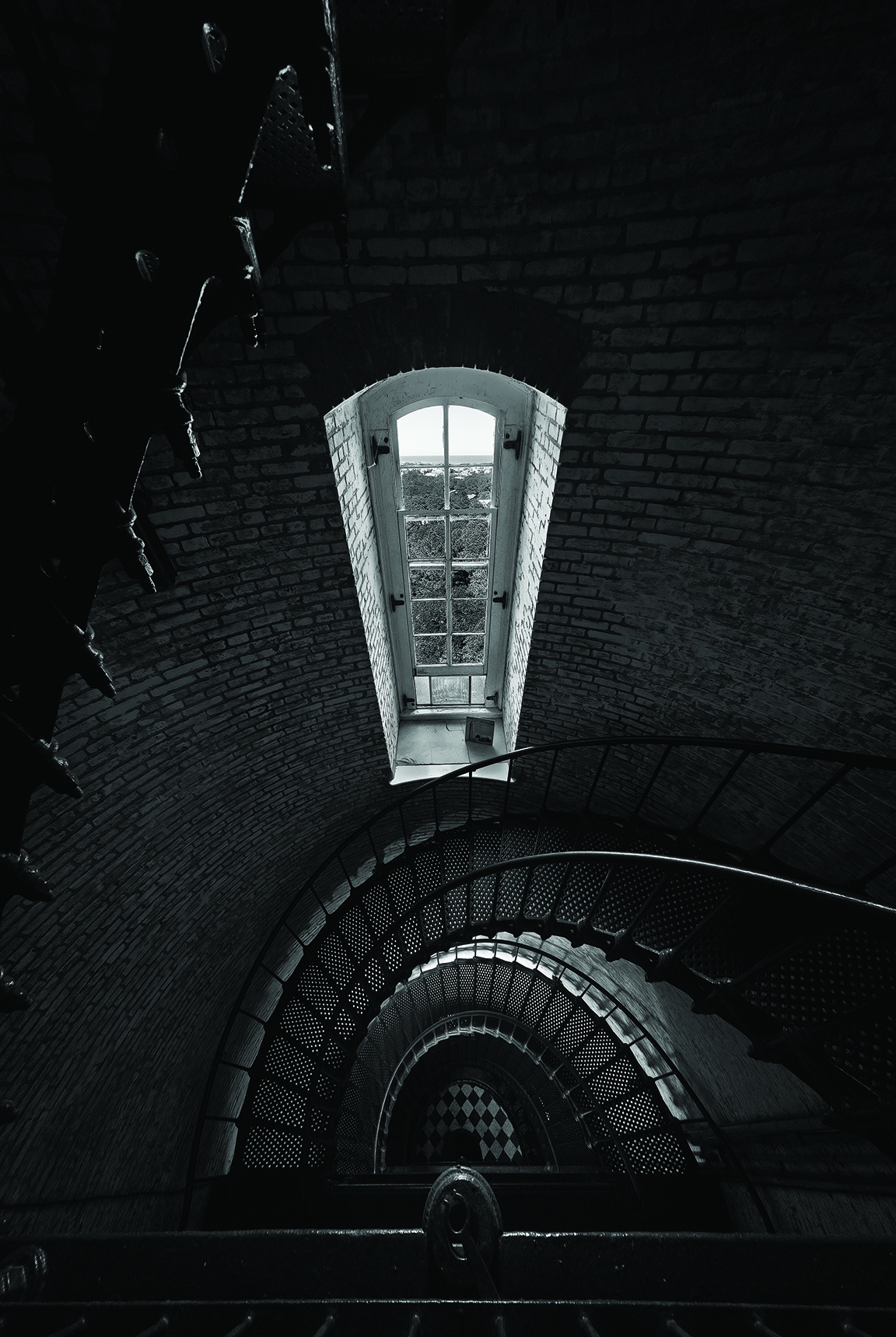An Organic Image


I was on a trip to photograph lighthouses on the Outer Banks of North Carolina and ended up at the Currituck Beach lighthouse earlier than I wanted for the light, so I decided to climb up to the lantern room to check out the view. I was mesmerized by the spiral stairs and spent most of my time shooting inside the structure. For this image, I knew I had to carefully balance my exposure to retain some detail outside the window, so I picked a window that was mostly looking out at the green foliage.
For my still work, I shoot with a variety of Canon cameras: EOS-1D X for high-speed continuous shooting, the EOS 5DS R for its 50-megapixel resolution, and the EOS R for its small and light form factor. Most of my still photography is done with Canon glass. I like the way it looks with their sensors. The sharpness and contrast of their lenses, combined with the dynamic range of the sensor, just seem to fit the way I shoot. I feel that I get a more organic, filmlike image. I have a variety of focal lengths, from full-frame fisheye to 800mm. For some landscapes, I’ll use a tilt-shift lens. For the photo shown here, I used an EF 8-15mm f/4L Fisheye USM.
Mostly, I shoot around f/8 to f/11 for landscapes and do a lot of focus stacking. I use several different filters, all Tiffen, including a polarizer to reduce haze and control glare, a 3-stop graduated ND to control skies in my landscapes and the foreground during long nighttime exposures, and 4- and 10-stop NDs for long daylight exposures. With wildlife, I try to shoot a tight stop — f/16 to f/22 — for the increased depth of field, which means I have to shoot at higher ISOs than I normally do to get a faster shutter speed for controlling motion blur. I use Topaz Labs’ DeNoise AI on those images.
What I’m shooting determines my configuration. I use long lenses with the 1D X when photographing wildlife, and work off a Really Right Stuff tripod with an FG-02 gimbal head. For landscapes, I primarily shoot with the 5DS R and treat it like a view camera. I use a Hoodman loupe magnifier on the rear display screen to help me set critical focus.
I almost never use automatic functions on a camera — which, I guess, is a throwback to my film days — though I do use autofocus and find Canon cameras to be very accurate in this regard. ISO is almost always at the native for the camera I’m using, and I always shoot raw images, with the least amount of compression, because I want the best “negative” to work with in post.
Five on Photography - The American Society of Cinematographers (en-US) - The American Society of Cinematographers
Read More

No comments:
Post a Comment